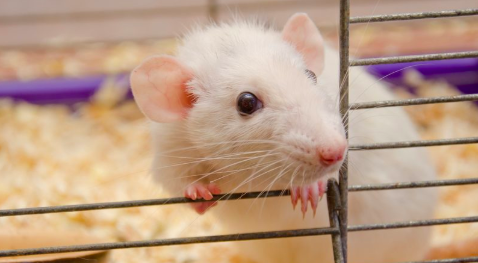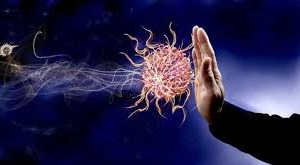
Dihydroxy-isosteviol methyl ester of Pulsatilla nigricans extract reduces arsenic-induced DNA damage in testis cells of male mice: its toxicity, drug-DNA interaction and signaling cascades
Comments by The Homeopathic College: “A methyl ester of the homeopathic remedy Pulsatilla nigricans has shown promise in helping mitigate DNA damage done by arsenic induced reproductive poisoning! Good news for homeopathy!”
Originally published in the Journal of Chinese Integrative Medicine: Volume 10, 2012 Issue 12
1. Asmita Samadder (Cytogenetics and Molecular Biology Laboratory, Department of Zoology, University of Kalyani, Kalyani 741235, India )
2. Jayeeta Das (Cytogenetics and Molecular Biology Laboratory, Department of Zoology, University of Kalyani, Kalyani 741235, India )
3. Sreemanti Das (Cytogenetics and Molecular Biology Laboratory, Department of Zoology, University of Kalyani, Kalyani 741235, India )
4. Durba Das (Cytogenetics and Molecular Biology Laboratory, Department of Zoology, University of Kalyani, Kalyani 741235, India )
5. Arnab De (Cytogenetics and Molecular Biology Laboratory, Department of Zoology, University of Kalyani, Kalyani 741235, India )
6. Kakali Bhadra (Entomology Laboratory, Department of Zoology, University of Kalyani, Kalyani 741235, India )
7. Anisur Rahman Khuda-Bukhsh (Cytogenetics and Molecular Biology Laboratory, Department of Zoology, University of Kalyani, Kalyani 741235, India )
OBJECTIVE: To evaluate the ameliorative efficacy of dihydroxy-isosteviol methyl ester (DIME) of Pulsatilla nigricans extract in arsenic-induced DNA damage in testis cells of mice.
METHODS: The mice were treated with sodium arsenite (SA) solution intragastrically at a dose of 20 mg/kg per day and examined at 30, 60, and 90 d after treatment. We divided SA-intoxicated mice into two sub-groups: one fed with DIME at a dose of 35 mg/kg and the other with 85% alcohol. We analyzed the expressions of apoptotic signal proteins like CYP1A1, p53 and caspase 3, ascertained the level of cellular and DNA damage and estimated the level of testicular-toxicity biomarkers. We studied the interaction of DIME with calf thymus DNA as target through circular dichroism spectra and melting temperature profiles.
RESULTS: We observed an elevation in all apoptotic and toxicity biomarkers leading to cellular and DNA damage in the SA-intoxicated mice which showed significant inhibition or reversal on administration of DIME. Results also showed that DIME interacted with DNA, bringing in discernible changes in structure and conformation.
CONCLUSION: DIME has potentials for therapeutic use in amelioration of arsenic-induced reproductive toxicity.
Received May 17, 2012; accepted June 19, 2012; published online December 15, 2012.
Full-text LinkOut at PubMed. Journal title in PubMed: Zhong Xi Yi Jie He Xue Bao.
Correspondence: Anisur Rahman Khuda-Bukhsh, PhD, Professor; Tel: +91-33-25828750-315; E-mail: prof_arkb@yahoo.co.in, khudabukhsh_48@rediffmail.com
Arsenicals are widespread in the environment as a result of natural and anthropogenic occurrence and are exposed through drinking water in many areas of the world. Arsenic exposure is related to severe health problems in human such as skin cancer, diabetes, liver and kidney disorders and several other toxic effects in other mammals[1]. One study has shown that arsenic in drinking water is also associated with generating oxidative stress and genotoxicity in testicular tissues[2], causing deterioration of the semen quality, inhibiting testicular steroidogenic enzymes and reducing the weight of testes and accessory sex organs.
Pulsatilla nigricans, commonly known as wind flower, belongs to the family Ranunculaceae which comprises about 33 species. It is a herbaceous perennial plant found primarily in North America, Europe and Asia[3]. The dried powdered flowers are used as folk medicine against food poisoning, painful conditions of the male reproductive system, such as swelling of the testicles (orchitis) or swelling of a structure in the back of the testicles (epididymitis)[4], as well as for painful conditions of the female reproductive system, such as menstrual cramps (dysmenorrhea) and painful ovaries (ovaralgia). P. nigricans contains many ingredients like saponin, potassium sulphate, and anemonic acid[5]. Interestingly, however, none reported the presence of an important biologically active ingredient, a dihydroxy-isosteviol methyl ester (DIME) from P. nigricans earlier to our work and whether DIME could interact with DNA, the cellular target of many therapeutic molecules.
Some preliminary studies regarding the toxic effects of arsenicals on male reproductive hormone and enzymes have been undertaken earlier[6], but only one study[7] dealt with the DNA damage and apoptotic effects of arsenic on reproductive toxicity. Though a few botanicals and plant extracts have been tested for their possible ameliorative effects against arsenic-intoxication[6], no one had earlier tested P. nigricans or its major compound, DIME, for its possible ameliorative potentials against arsenic toxicity. Hence, the present study was undertaken with a view to isolate, characterize and identify the principal bioactive compound, and to examine if it had ameliorative potentials against sodium arsenite (SA)-induced toxicity in testis cells of mice, to ascertain the possible signaling pathway for its action and drug-DNA interaction, if any, and finally to evaluate its possible therapeutic potentials in formulation of drug for arsenic victims.
1 Materials and methods
1.1 Preparation of ethanolic extract of P. nigricans, its solvent extraction for structural characterization and preparation of DIME Ethanolic extract of P. nigricans was sold in the market by Schwabbe, Germany as the mother tincture of a homeopathic drug Pulsatilla nigricans θ. Standard methods[8] were adopted during the process of the extract preparation of the whole plant; then the extract was subjected to structural characterization via separation by standard column chromatography (chloroform∶methanol 8∶2 ratio; silica gel 60 to 120 mesh size) and sent for mass spectroscopic, fourier transform infrared (FTIR) spectroscopic and nuclear magnetic resonance analyses. After characterization, the major compound was determined as DIME. It was dissolved in 85% (weight/volume) ethyl alcohol and used for further in vivo experiments.
1.2 Reagents for experimental purpose We used all the chemicals of analytical grade and procured them from Sigma, USA
1.3 Animals We used healthy inbred strain of Swiss albino mice (6 to 8 weeks old and 25 g of body weight), housed for at least 14 d in an environmentally controlled room (temperature 24 to 26 ℃; humidity 55%±5%; 12-h light/dark cycle) with access to food and water ad libitum. We followed the guidelines and conducted the experiments approved and supervised by the Animal Ethics Committee, Animal Welfare Committee, University of Kalyani, India.
1.4 Experimental design We selected a total number of 60 healthy mice weighing between 28 to 30 g in the experiment. We randomly subdivided the mice into four groups, with each group comprising six mice.
Group 1 served as negative control fed with normal diet and water. Group 2 served as a rsenic control fed with SA at an optimum dose of 20 mg/kg per day. We examined various parameters in mice testis after 30, 60 and 90 d of SA treatment. Group 3 served as positive control with 18 SA-fed mice fed with 85% alcohol twice daily at corresponding doses of DIME and mice testis tissues were observed after 30, 60 and 90 d of vehicle feeding (six mice each in every interval). Group 4 served as drug-treated subgroup with 18 mice from the SA-fed group fed with ethanolic extract of DIME at a dose of 35 mg/kg twice per day. We observed them after 30, 60 and 90 d of drug treatment. In a range-finding trial earlier, we fed DIME to three mice each at a dose of 25, 35 and 45 mg/kg, twice daily with or without SA treatment; the 45 mg/kg dose showed a little cytotoxicity in both SA-fed and unfed groups, the 35 mg/kg DIME-fed group showed no cytotoxicity in SA-unfed group, but showed considerable amelioration of various parameters of reproductive toxicity. Therefore we selected the dose of 35 mg/kg as the optimal dose for pursuing the more detailed study.
1.5 Selection of dose of SA First, in a range-finding trial we fed three mice each 10, 20 and 40 mg/kg of SA, respectively, daily along with normal diet; two of the three mice died after receiving the 40 mg/kg dose, but all three survived at the dose of 20 mg/kg and showed significant changes in some parameters of our interest, and there was no significant change in the 10 mg/kg SA-fed group. Therefore we selected the dose of 20 mg/kg as the optimum dose for our study to make economy on cost and mice lives, as also adopted by some earlier workers[9].
1.6 Isolation of sperm cells We collected mice spermatozoa and stored them in Beltsville extender (BTS) following the standard protocol[10] and undertook several parametric studies. We counted the isolated epididymal sperm in haemocytometer as per standard protocol[10]. We stained the isolated sperm cells by 4′,6-diamidino-2-phenylindole dihydrochloride (DAPI) for determining the extent of apoptosis in sperm cells. We adopted the standard technique[11] to examine sperm head anomaly (SHA) in 5 000 sperms in each series. We measured the arsenic content in dissected-out testes by the standard procedure[12] with an atomic absorption spectrophotometer (Perkin Elmer, USA). We analyzed the activities of acid phosphatase (ACP) and alkaline phosphatase (ALP)[13]. We extracted the DNA of testis by standardized phenol-chloroform method and DNA gel electrophoresis was performed in 1% agarose gel[8].
1.7 Analysis of interaction of DIME with calf thymus DNA by circular dichroism spectra We undertook circular dichroism (CD) spectra of CT DNA, alcohol plus CT DNA and DIME plus CT DNA, in the region of 200 to 650 nm following the protocol of Samadder et al[8]. The DNA and the DIME concentrations in the experiments were 1.0 mmol/L and 75 μmol/L, respectively.
1.8 Determination of thermal denaturation We followed the standard protocol[8] to determine the melting temperature profile change of the DNA alone (4.00 mmol/L), DNA plus alcohol and DNA plus DIME (20 μmol/L) at 260 nm.
1.9 Immunohistochemical study We collected the testis tissue and fixed them in 10% normal buffered saline and processed them for immunohistochemical staining against p53 antibody according to the standard protocol[14].
1.10 Western blot analysis We conducted Western blot analysis by using anti-CYP1A1 antibody (Santa Cruz Biotechnology, USA) and caspase 3 antibodies (BD Bioscience, USA). We used ALP-conjugated secondary antibody (Sigma, USA)[8] for the purpose. For quantitative analysis of each band, we determined the band intensity using the Total Lab software (Ultra Lum USA).
1.11 RNA extraction and quantitative reverse transcriptase-polymerase chain reaction analysis We extracted the total RNA from the pancreatic tissue using TRIzol reagent according to the manufacturer’s instructions. We then undertook reverse transcriptase-polymerase chain reaction (RT-PCR) as per the standard practice[8]. The sequences (Bioserve Biotech, Hyderabad India) of the forward and reverse primers used for specific amplifications are as follows: glyceraldehyde-3-phosphate dehydrogenase (G3PDH), 5′-ATGGGGAAGGTGAA-GGTCGG-3′ and 5′-GGATGCTAAGCAGTTGGT -3′; p53, 5′-GAAATTTGTATCCCGAGTATCTG -3′ and 5′-GTCTTCCAGTGTGATGATGGTAA -3′; hyaluronidase, 5′-GGGGATGTGAGGATCCTTAACCCTC -3′ and 5′-AACCACTTTGATTCATGGTAA -3′.
1.12 Statistical analysis All the experimental data were presented as mean±standard error of mean of values of three independent experiments and statistically analyzed by one-way analysis of variance using SPSS 14.0 software. P<0.05 was considered significant.
2 Results
2.1 Characterization of DIME We obtained one major peak in mass-spectroscopy, signifying one major active component. The mass spectra value of the component was MS: m/z = 336 (M+), of molecular formula C21H34O3, suggesting it to be DIME, with a molecular weight of 334.25 (Figure 1). FTIR showed several peaks signifying as: 1 767.28: -C=O ester group, 2 927.23: -CH2 group, 1 634: -C=O, 1 517-1 079: -CH3 aliphatic group.
See full study by clicking here.
Header Photo Credit: Angelman Syndrome News


